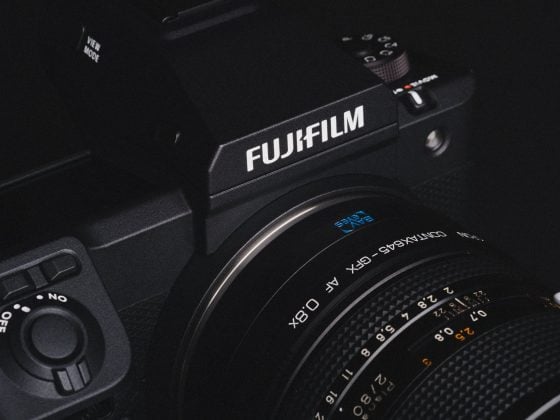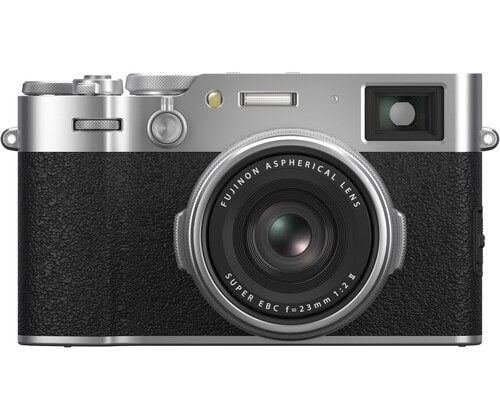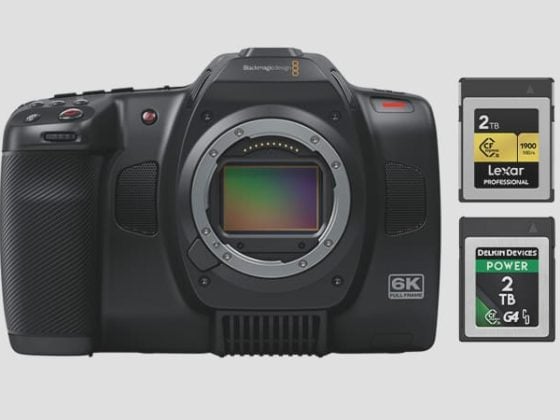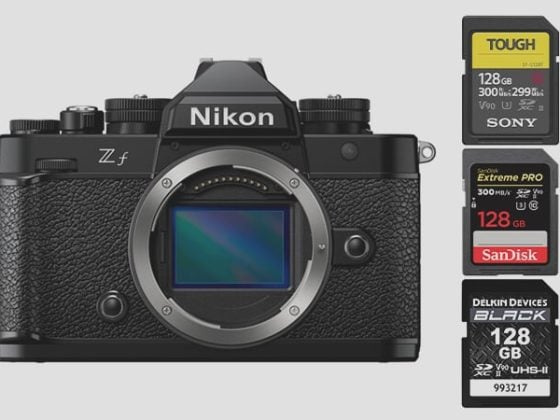The X-Pro 2 is the first of Fujifilm cameras to feature dual SD memory card slots. With slot 1 capable of UHS-II and slot 2 using UHS-I, the performance and configuration options make this camera very impressive. I’ve tested all the most popular UHS-I and UHS-II memory cards to determine the best SD memory card for the X-Pro 2.
This camera continues to impress me and Fujifilm has really done an excellent job in making sure it’s packed with all the latest tech they could get their hands on.
Camera Specs
Sensor: APS-C 24.3 MP / Processor: X-Processor Pro
Sensor SD Memory Card Type: UHS-II / UHS-I
Continuous Burst: 8fps
Size of Buffer: 1GB
Uncompressed Shots Till Buffer Fills: 24-29 depending on card.
Est. Time Taken To Clear Buffer: 10 seconds with the Lexar 2000x
Fujifilm X-Pro 2 – Amazon / Adorama
Best Memory Card For The Fujifilm X-Pro 2
The X-Pro 2 has both UHS-II and UHS-I slots that can be set up as backup, overflow, or RAW+JPEG.
With UHS-II cards topping out at 108 MB/s, UHS-I 77 MB/s, and a buffer of 1 GB, we are looking at some really good performance.
But not all cards are created equal and especially not all UHS-I cards, so use this speed test to figure out the best cards for you to use in your configuration.
All USB 3.0 tests were done using CyrstalDisk – Windows 10, with the Lexar SR2.
| SD Memory Cards | USB 3.0 Read | USB 3.0 Write | Fuji X-Pro 2 Write |
| UHS-II | |||
| Lexar 64GB 2000x UHS-II | 272.7 MB/s | 244.5 MB/s | 108.35 MB/s |
| Toshiba 64GB UHS-II | 258.8 MB/s | 226.5 MB/s | 102.80 MB/s |
| Transcend 64GB UHS-II | 290.2 MB/s | 182.1 MB/s | 100.40 MB/s |
| Delkin 32GB UHS-II | 253.5 MB/s | 219.6 MB/s | 97.73 MB/s |
| Sandisk Extreme Pro 64GB UHS-II | 260.5 MB/s | 214.8 MB/s | 95.22 MB/s |
| Lexar 64GB 1000x UHS-II | 147.4 MB/s | 78.4 MB/s | 66.39 MB/s |
| UHS-I | |||
| Sandisk Extreme Pro 64GB U3 | 98.6 MB/s | 90.8 MB/s | 77.24 MB/s |
| Kingston 64GB U3 | 98.1 MB/s | 90.4 MB/s | 75.15 MB/s |
| Samsung Pro+ 64GB U3 | 97.5 MB/s | 87.3 MB/s | 73.39 MB/s |
| Samsung Pro 64GB U1 | 96.3 MB/s | 82.2 MB/s | 69.97 MB/s |
| Samsung Pro 64GB U3 | 97.7 MB/s | 78.6 MB/s | 67.00 MB/s |
| Sony 64GB U3 | 96.5 MB/s | 84.5 MB/s | 66.13 MB/s |
| PNY 64GB U1 | 96.5 MB/s | 66.5 MB/s | 58.38 MB/s |
| PNY 64GB U3 | 96.5 MB/s | 66.1 MB/s | 57.14 MB/s |
| Sandisk Extreme Plus 64GB U3 | 99.0 MB/s | 64.4 MB/s | 56.91 MB/s |
| Lexar 600x 64GB U1 | 95.4 MB/s | 64.8 MB/s | 56.78 MB/s |
| Lexar 633x 64GB U3 | 93.3 MB/s | 67.3 MB/s | 56.58 MB/s |
| Transcend 64GB U3 | 96.7 MB/s | 68.4 MB/s | 54.29 MB/s |
| Sandisk Extreme 64GB U3 | 72.43 MB/s | 54.1 MB/s | 48.55 MB/s |
| Samsung 64GB U1 EVO | 47.7 MB/s | 27.3 MB/s | 22.99 MB/s |
Recommended SD Memory Cards For The X-Pro 2
Best UHS-II Memory Cards
The fastest UHS-II memory card for the X-Pro 2 is the Lexar 2000 UHS-II, In second place is the Toshiba UHS-II.
Transcend is also doing well and Delkin is keeping up.
As a note, I haven’t tested the UHS-II cards in the UHS-I slot, but typically my Sandisk UHS-II card does not perform well in UHS-I mode compared to other UHS-I cards. For this reason, I would buy a UHS-II card for slot 1 and the fastest UHS-I card for slot 2.
Lexar x2000 UHS-II 64GB – Amazon / Adorama
Toshiba UHS-II 64GB – Amazon
Transcend UHS-II 64GB – Amazon
Best UHS-I Memory Cards
If you’re looking to save a little cash and don’t find yourself doing a lot of burst shooting, or just want a backup or overflow card for slot 2, UHS-I memory cards work great in both slots. A lot of brands make great cards these days, but here are what I recommend.
Sandisk Extreme Pro U3 64GB – Amazon / Adorama
Kingston U3 64GB – Amazon / Adorama
Samsung Pro+ U3 64GB – Amazon
X-Pro 2 Dual Slot Memory Card Configurations
If you want to use dual memory card slots in the X-Pro 2 you have a few options of how this works.
Backup: This will mirror the card slot 1 with card slot 2. Keep in mind, that when you have this set, you are slowing down your whole system to whatever the slowest card you have is. In other words, the camera can only perform as fast as what’s in slot 2, which is a UHS-I slot.
Overflow: This is great if you use smaller cards and are worried about running out of space. Once the memory card in slot 1 is full, the camera will start writing to slot 2.
Raw+JPEG: This setting will write RAW to slot 1 and JPEG to slot 2. I haven’t noticed this method slowing down the performance of the UHS-II memory card.
Best SD Memory Card Fuji X-Pro 2 Conclusions
If you’re looking to save money, then a UHS-I card will work just fine for you. With the 1GB buffer, you will not notice the difference in speed between UHS-I and UHS-II memory cards unless you do a lot of burst shooting or bracketing.
One of the main advantages of the faster UHS-II cards is they will allow you to burst in JPEG mode for an extremely long time before filling the buffer. A least a minute or two. A lot of the slower UHS-I cards could shoot JPEG bursts for about 15 seconds before slowing down.
What’s most interesting is the X-Pro 2 is the fastest-performing camera on the market that I’ve tested when it comes to writing to memory cards. Even outperforming the Canon 7DII is capable of writing at 102MB/s with its CF cards. It looks like UHS-II is winning currently for in-camera speeds. See Fastest Memory Cards Canon 7d II to compare.
| **This website contains affiliate links. We will earn a small commission on purchases made through these links. Some of the links used in these articles will direct you to Amazon. As an Amazon Associate, I earn from qualifying purchases. |





